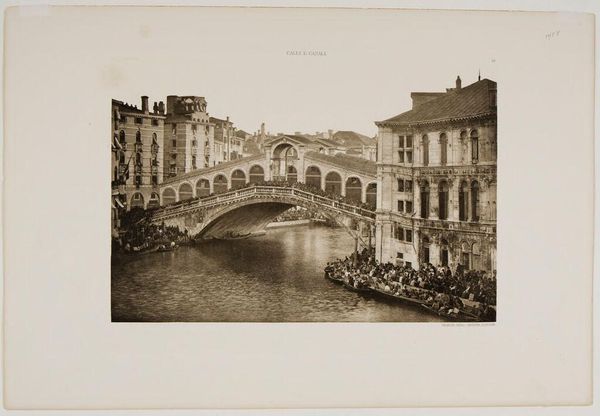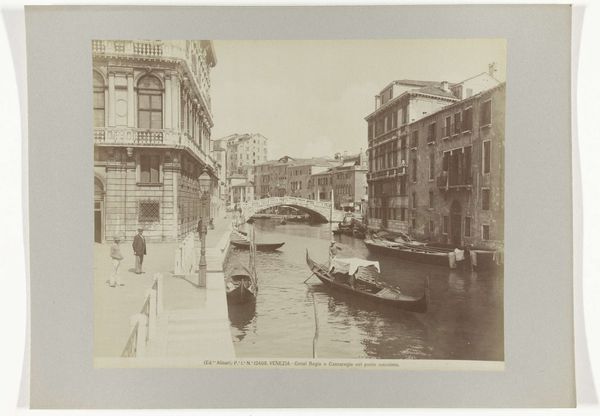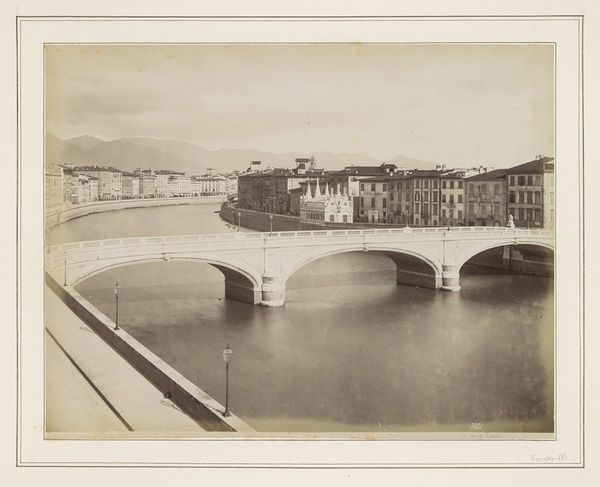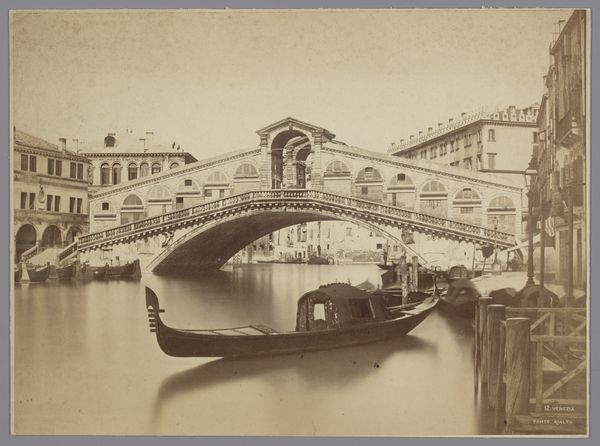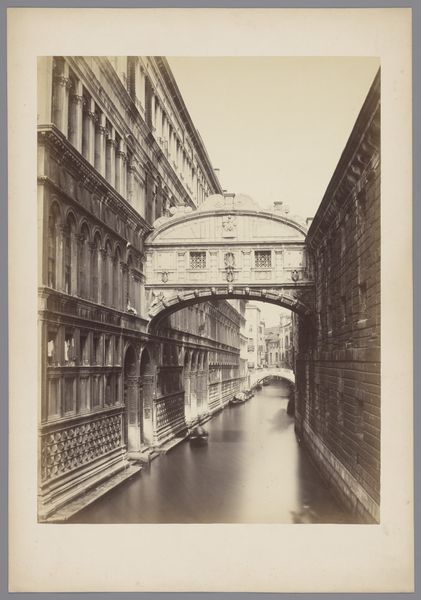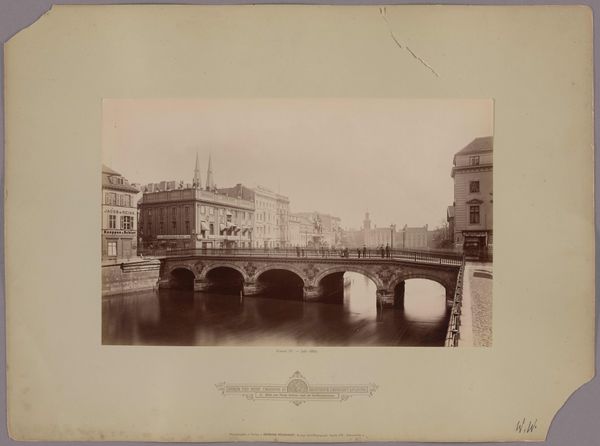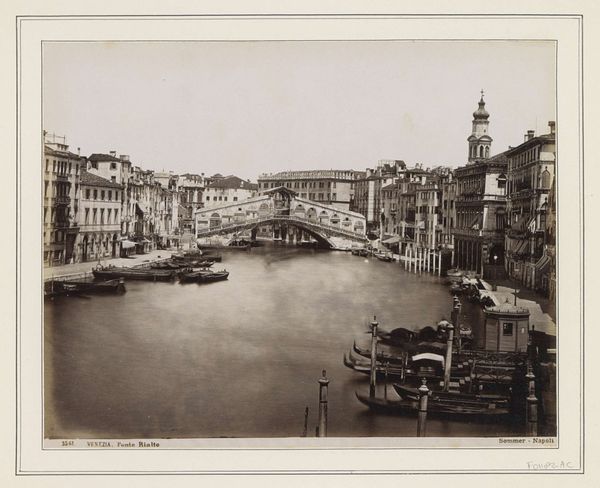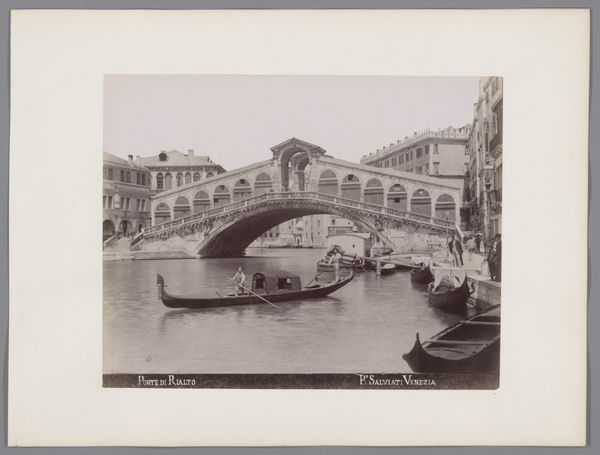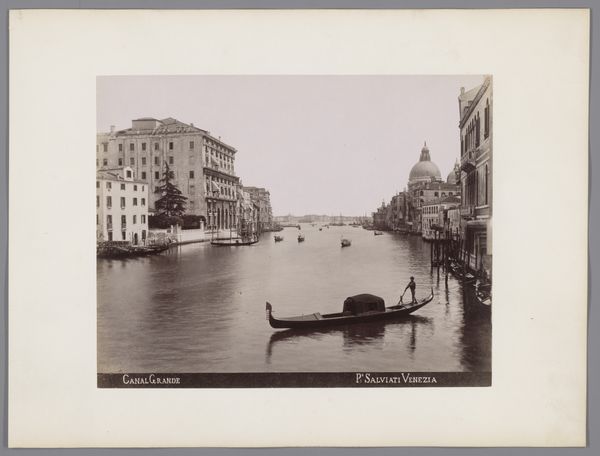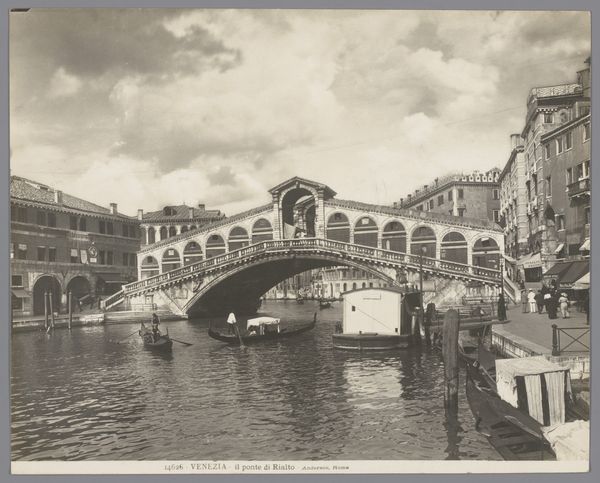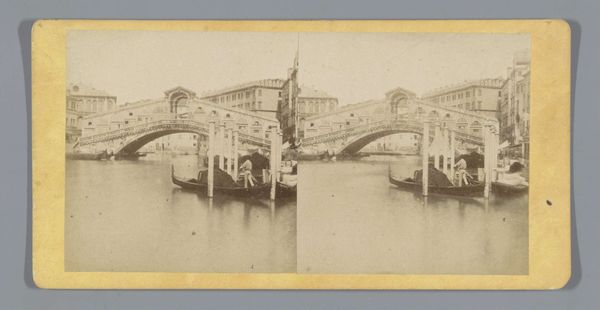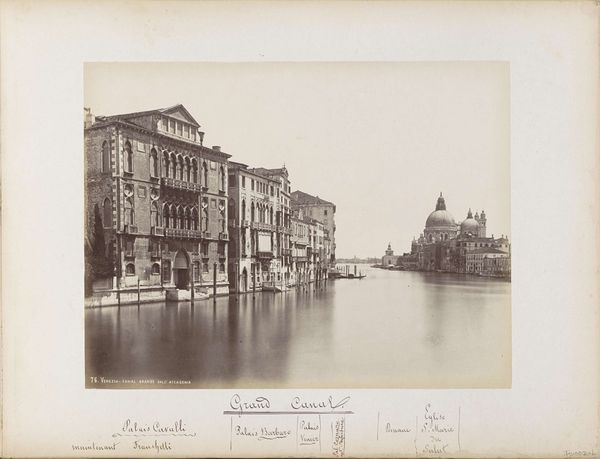
Dimensions: height 198 mm, width 260 mm
Copyright: Rijks Museum: Open Domain
Carlo Ponti created this photograph of the Rialto Bridge in Venice sometime in the late nineteenth century, using a process that was itself a product of industrial chemistry. Consider the way that the photographic process itself mirrors the structures of labor that define Venice. The image is captured by light, but made permanent through a complex procedure involving silver salts and other materials, all produced on a mass scale. It is this repeatable, almost mechanical quality that makes photography so different from painting. The photograph flattens and disseminates the image of Venice, making it available for mass consumption. This print could be seen as a parallel to the commodification of Venice itself, now overwhelmed by tourism. In its own way, this photograph is a reminder that no image, no matter how beautiful, can be separated from the means of its production and consumption. Ponti’s Rialtobrug is a case study in the entanglement of art, labor, and the marketplace.
Comments
No comments
Be the first to comment and join the conversation on the ultimate creative platform.

